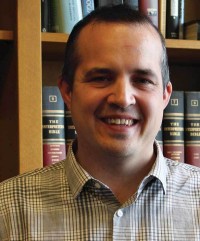No, it's not remarkable that Ryan keeps getting reelected by wide margins
I don't usually nitpick weak media coverage of electoral politics, but I take it personally when it's about the place where I grew up. Yesterday Renee Montagne interviewed Brad Lichtenstein, who recently shot a documentary about Janesville, WI. The film isn't specifically about congressman and vice presidential candidate Paul Ryan, but lucky for Lichtenstein, the city's most famous son is all over the news this week. Toward the end, Montagne marvels that "Paul Ryan, a Republican, has remained to this day popular in a traditionally Democratic-leaning district."
Lichtenstein's work, as he clarifies in response to Montagne, is focused on Janesville, not the rest of Wisconsin's first congressional district. But for what it's worth, the district overall is not traditionally blue; it's a longtime swing district that has recently leaned slightly right. Bush won a majority there in 2004; Obama did the same in 2008. In each case Wisconsin 1 went a couple points redder than the nation generally.
As for Ryan's seat itself, it's true that Democrat Les Aspin held it for more than 20 years (till President Clinton appointed him to run the Pentagon). Republican Mark Neumann, who this week lost the Republican primary for U.S. Senate, picked the seat up in the 1994 takeover—as part of a massive, nationwide sea change in congressional power. Ryan took over for his fellow Republian in 1999 and has held the seat ever since.
All this is not really the fascinating story of a blue city supporting one of its own despite itself. It's the humdrum story of a swing district confirming the power of incumbency in the U.S. Congress. During Aspin's tenure, the reelection rate for House members never dipped below 88 percent. Under Ryan, the highest turnover was in 2010, when a piddling 85 percent of members kept their seats. Ryan is a gifted politician. But there's nothing remarkable about his ability to get reelected in Wisconsin 1. Nor is it surprising that he wins by solid margins, since his opposition is usually less than formidable. (The parties focus on races they can win.)
I grew up in a swing state in flyover country. This means that, aside from the occasional populist rebellion followed by a historic gubernatorial recall attempt, the national media tends to forget the place exists till another leap year rolls around and the candidates start jetting about making speeches. But it takes just cursory research to learn that Wisconsin 1 includes the state's fourth and fifth largest cities to the east, its tenth largest (Janesville) to the west, Milwaukee suburbs to the north and lots of right-leaning small towns and rural areas in between. (That's where I'm from.) It's a classic urban-rural swing district, in which the seat might switch parties but it's no easy thing to unseat a competent incumbent.
Of course, that reality doesn't serve the media's perennial need to treat the VP pick as if it it actually matters enough to make headlines for days and days. So you know, carry on.






